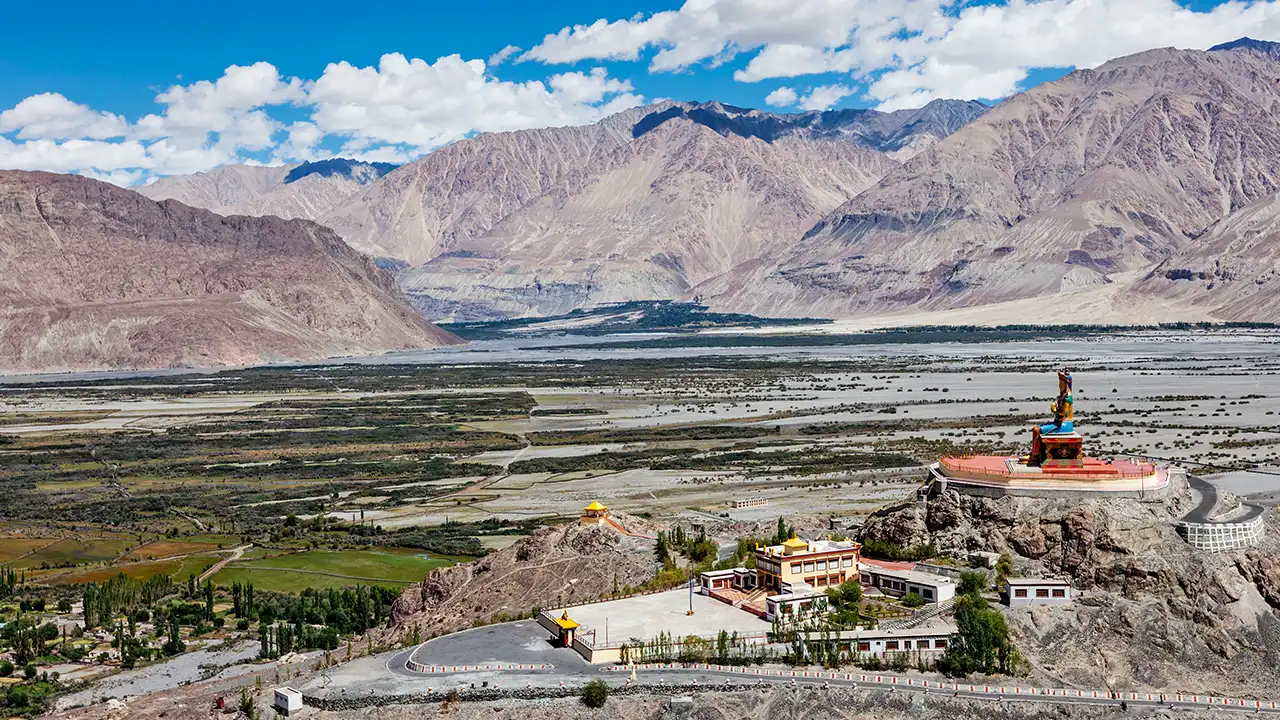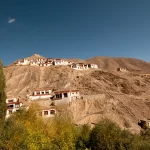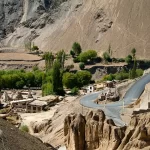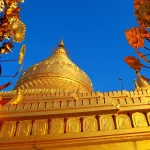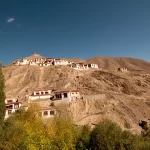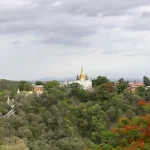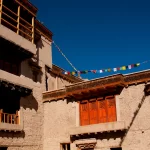Surrounded by the rugged, high-altitude beauty of the Lahaul Valley in the state of Himachal Pradesh, India, Shashur Monastery is not simply a place of religious refuge—it’s a beacon of Buddhist tradition, Himalayan toughness, and centuries of tradition. Framed against the sweeping backdrop of precipitous peaks and the turquoise blue Bhaga River, this venerable Gompa (Tibetan monastery) provides not only tranquility and spiritual perspective but also a compelling glimpse into the cultural landscape of far-off Lahaul-Spiti.
Setting the Scene: Lahaul’s Remote Elegance
Shashur Monastery is a mere 3 kilometers from Keylong, the administrative headquarters of the Lahaul district. Though accessible from Keylong on foot or a brief drive, the area itself is an adventure to reach. The road to Keylong twists through high mountain passes like Rohtang and Baralacha La, making the trip as memorable as the destination. Towering summits, rare vegetation, and boulder-littered valleys characterize the scene, a sense of mystical loneliness that adds depth to the religious ambiance of the monastery.
“Shashur” is local for “blue pines,” the tall, colorful pine trees that surround the monastery. Those trees are unusually found in the otherwise dry area, providing the ancient building a distinctive natural foreground and a contrasting symbol of fortitude and peacefulness.
Historical Origins: A Tibetan Heritage
Shashur Monastery was founded in the 17th century by Lama Deva Gyatso, a prominent missionary monk of the Gelugpa sect—the same school of Tibetan Buddhism to which the Dalai Lama belongs. Deva Gyatso was a missionary of Ngari (Western Tibet), and his aim was to establish the Gelugpa tradition in Lahaul, which until then had been under the spiritual influence of older sects like the Nyingma.
The monastery served as a significant bulwark of Tibetan Buddhism, bridging the isolated Lahaul valley with the wider Himalayan Buddhist world. Shashur’s religious and cultural connections went as far as Zanskar and Ladakh, making it both a religious center and pre-modern connecting link between India and Tibet.
Architectural Grace: Tibetan Aesthetics in Stone and Wood
The architecture of Shashur Monastery is in the traditional Tibetan style. Constructed from locally found stone and wood, the monastery seems rough but beautiful. It is situated on a gently sloping hill, overlooking the Bhaga River and the valley below—sites well chosen to facilitate meditation and seclusion.
Within the monastery are grand prayer halls that are decorated with intricate frescoes and tangkhas (scroll paintings) of Buddhist gods and events in the life of the Buddha. Particularly notable is a giant figure of Padmasambhava (Guru Rinpoche), the Indian monk who lived during the 8th century and is said to have brought Buddhism to Tibet. Carved wood ornamentation, hand-painted murals, and intricately detailed masks employed in sacred dances all add color to the monastery’s look.
Treasures Within: The Spiritual and the Artistic
Aside from its function as a house of worship, Shashur Monastery is a storehouse of religious art. Its wall paintings, some of which date back by several centuries, exhibit incredible detail and color vitality despite the local harsh climate. They usually present the Wheel of Life, diverse manifestations of Avalokiteshvara (the Bodhisattva of Compassion), and other significant Buddhist iconography.
The monastery also contains ancient Bhoti (a Tibetan script) manuscripts, valuable thankas, and ritual masks employed in religious performances. A collection of Kangyur texts—a series of scriptures that contain the Buddha’s teachings—is one of the most valued relics in the monastery.
Festivals and Rituals: The Spirit in Celebration
One of the liveliest times to see Shashur Monastery is for the summer festival that takes place in June or July, the Shashur Gompa Festival. Monks wear fancy costumes and stage cham dances—masked ritual dances symbolizing the victory of good over evil during the three-day festival.
The cham dances are richly symbolic, integrating drama, music, and movement to express Buddhist principles. The mood is charged, attracting not just local villagers from throughout the valley but also tourists who visit to see this unusual cultural phenomenon. Amidst the whirling dancers, the blast of horns, and the aroma of juniper incense, visitors are provided with a raw glimpse into Tibetan Buddhist spirituality.
Life at the Monastery: Discipline and Devotion
The daily routine at Shashur is disciplined and contemplative. The monastery is serviced by a small group of resident monks, who perform prayers in the morning and evening. Their day consists of chanting, meditation, and studying Buddhist texts. Although relatively inaccessible, the monastery still has a steady stream of pilgrims visiting, particularly in the summer months when the roads are open.
The monks tend to be receptive to discussions with visitors, particularly if they express honest interest in Buddhism or the regional history. Some tourists report experiencing moments of subdued connection—enjoying a cup of tea with a monk while gazing out at the expansive mountains, or being offered a seat to watch an early morning prayer ceremony.
Visiting Shashur: A Practical Guide
The optimal time to visit the Shashur Monastery is from late May through early October, when Manali-Keylong roads are open and the weather is good. The monastery is accessible either by a short trek or drive from Keylong, and thus it makes for a good day excursion for travelers traveling in the Lahaul-Spiti area.
As the region sits at high elevation (about 3,700 meters or 12,000 feet), one is urged to acclimatize sufficiently and drink plenty of water. Thicker clothes, even during the summer, are essential owing to cold breezes and the resultant temperature plunges.
Basic guesthouses are on offer in Keylong, but luxury isn’t what one will find here. But where this area doesn’t have a modern comfort or amenity to match, it gains tenfold with unbridled, undiluted natural splendor and a depth of cultural richness.
Why Shashur Matters
In a rapidly changing world where modernity tends to destroy tradition, Shashur Monastery is a bulwark of ancient knowledge. It is the testament to the strength of a culture forged in isolation, religion, and an intimate relationship with nature. As a pilgrim, an adventurer, or a seeker of beauty, Shashur has something to give you: an opportunity to touch the divine in a landscape that seems eternal.
As the mantras resonate off the stone walls and the wind sweeps along the aroma of melting butter lamps across the valley, travelers become enveloped in a slower pace of life—one in which silence says volumes and peace becomes palpable.

